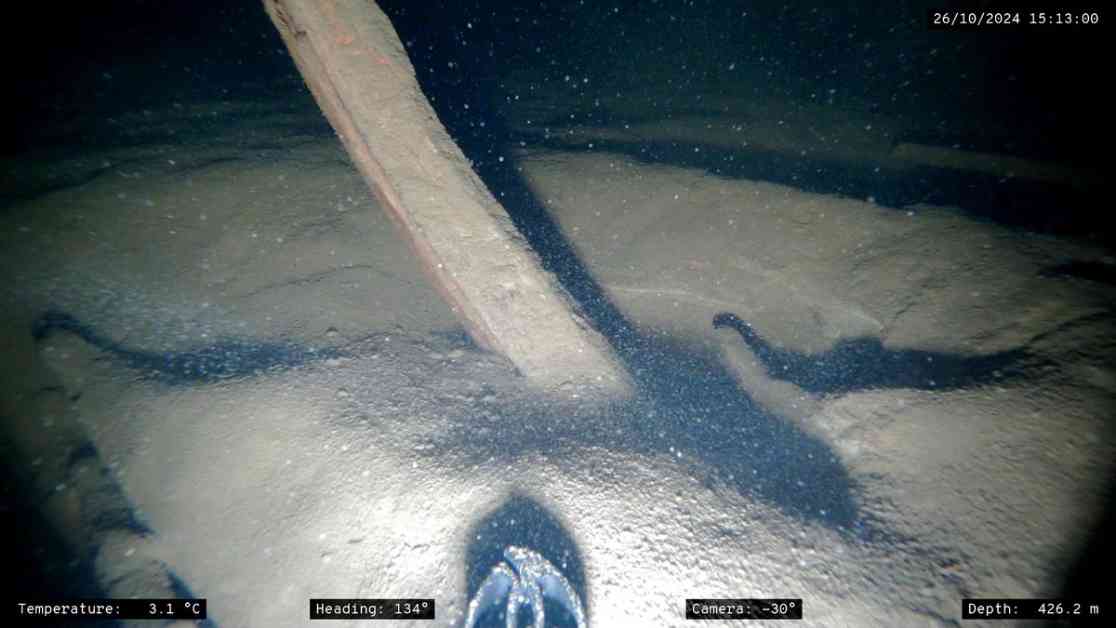A shipwreck found in Lake Mjøsa, Norway, has piqued the interest of researchers from the Norwegian University of Science and Technology (NTNU). The wreck, believed to be a local “føringsbåt” from up to 700 years ago, was discovered in 2022 by an autonomous underwater vehicle (AUV) used by Norway’s military.
Unfortunately, bad weather has hindered the researchers’ efforts to gather more information about the wreck. Despite exploring the site with a remotely operated underwater vehicle (ROV), technical issues and worsening weather conditions prevented them from taking wood samples for radiocarbon dating. As a result, the exact age of the wreck remains unknown until they can revisit the site next spring.
However, visible features of the wreck suggest that it was constructed between the years 1300 and 1700. The researchers believe that the vessel was likely used for transporting passengers and cargo across the lake. It is thought to be a local boat, known as a “føringsbåt,” which was commonly used on Norwegian lakes due to its flat-bottomed design, making it unsuitable for the open sea.
Further investigations revealed that the føringsbåt had an upright stern, a characteristic introduced in Norway after 1300. This differs from earlier Viking ships that had the same design on both ends. Additionally, the boat was built using the traditional Scandinavian “clinker” style of overlapping wooden planks, which was later replaced by the Mediterranean-inspired “carvel” style with flush planks.
The 33-foot-long wreck, covered in sediments, displays wide wooden planks that suggest they were cut with an ax, indicating its age. The current location of the wreck at the bottom of Lake Mjøsa, surrounded by deep and calm waters, raises questions about how it ended up there. Strong currents on the lake’s surface may have caused the føringsbåt to sink, leading researchers to speculate about a potential accident during a crossing.
Lake Mjøsa, the largest lake in Norway, has a rich history as a vital trade route connecting prosperous communities along its shores since at least the eighth century. While only a small portion of the lake bottom has been mapped, the discovery of this ancient shipwreck sheds light on the region’s maritime past and the vessels that navigated its waters centuries ago.
As researchers continue to uncover the secrets of Norway’s largest lake shipwreck, the story of the føringsbåt offers a glimpse into the maritime heritage of the region and the challenges faced by ancient sailors braving the waters of Lake Mjøsa.










